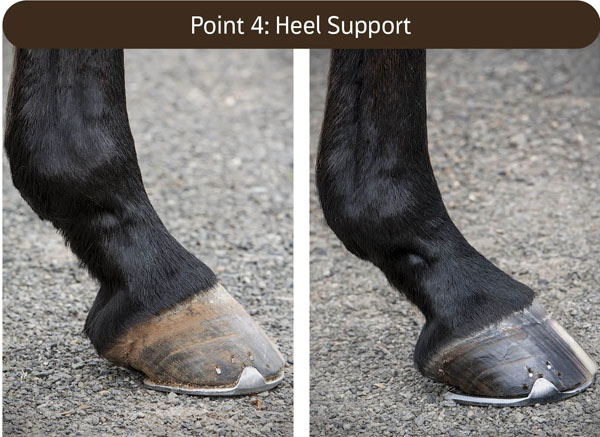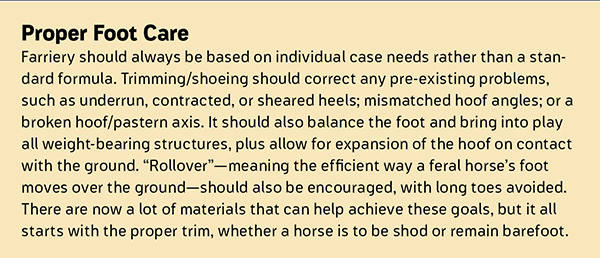For this update on navicular issues, we directed questions to Tracy A. Turner, DVM, MS, of Turner Equine Sports Medicine and Surgery in Big Lake, Minnesota (turnerequinesportsmed.com). Dr. Turner has chaired the Farrier Liaison Committee for the American Association of Equine Practitioners and is an acknowledged expert on the issues surrounding navicular syndrome.

Is the term ‘navicular disease’ now outdated?
I prefer navicular syndrome because it actually is a syndrome, meaning different diseases that all appear alike. They all create pain, and the horse perceives the pain similarly, but they stem from different injuries and must be treated differently. Palmar heel pain is also a good descriptive term, as it refers to the fact that all these conditions are desensitized by a palmar foot block (where the nerves at the back and bottom of the foot are blocked). Think of the heel of your hand’s palm.
How do I know if my horse is at risk?
Any horse can get it. Your horse’s foot is where the rubber meets the road, so to speak, making it the most common place for injury to occur. If you ride your horse, he can be subject to palmar foot pain. The type of footing you ride on is important, as is correct, routine farrier work. If your horse begins stumbling or his gait changes in any way, it’s a sign of something that needs to be checked out.
What can my vet and farrier do to help?
Your vet will determine if your horse has navicular syndrome, then try to pinpoint which type of disease process is at work, so treatment can be focused accordingly. MRI and other advanced imaging techniques are helpful, as the more precise the diagnosis of the cause, the more precise and effective the treatment. That said, correct trimming and shoeing should be the basis of all treatment (see box), with any medicinal or surgical treatment an adjunct to that.
What can I do to help?
Provide your horse with good nutrition, feeding no more than he needs to maintain fitness without getting fat. Exercise him on a regular basis. Plain old turnout, where a horse can act like a horse and not be boxed up in a stall, is also desirable. Exercise can’t be overemphasized, not just for hoof health but for a myriad of different equine health issues. There are horse owners who want to bundle their horse in bubble wrap and keep him in a stall. They think of him as a Maserati. But a horse is a biologic organism that needs to be used—and the more the better, within reason.







